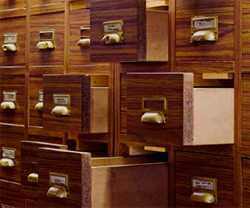Archiving may well be the least glamorous or exciting thing that has ever happened in a recording studio.
That said, none of the fun parts of music production have much point if the recordings they produce can’t be played back over time.
Understanding and practicing systematic archival basics is a necessity, whether you’re in it for the art, or to make a living (or some combination of the two).
Archiving a recording should be distinguished from “backing up” your data as follows:
—A backup is a working safety copy of your production data. The goal of a systematic approach to backups is to keep data loss from stopping or significantly delaying your work in-progress. Backups contain current production data for in-progress projects as of the conclusion of the most recent session.
—An archive is long-term asset storage. The goal of a systematic approach to archives is to be able to reproduce the various (finished) master recordings associated with a project throughout its useful life, i.e. copyright term.
Why Not Use Your Last Backup As An Archive?
Paradoxical as it sounds, technology is the stuff that’s standing in the way of your master recording playing back over the long term. Specifically, the sort of production data that we backup after every session is heavily dependent on two different groups of technology:
—Primary technology like the DAW session/project file, the audio file format, and the hard drive used to store the recording;
—Secondary technology like the OS version that facilitates your DAW version, all of your plugins, and the hardware capable of facilitating all of the above.
None of these may seem like imminent dangers, but just five or 10 years down the line there will likely be several technological barriers to playing back your DAW session in its current state, on the current storage device.
Examples abound, so we’ll move on without scary storytime.
What Should You Archive?
The music production process usually produces a minimum of 3 sets of master recordings:
—Multitrack Masters – the complete, edited multitrack recordings that fed the mixing process, e.g. Pro Tools sessions, 2-inch 24-track tapes, etc.;
—Mix Masters – the various 2-tracks and bounces that fed the mastering process, e.g. stereo audio files, 1/2-inch 2-tracks, etc.;
—Replication/Distribution Masters – the media that came out of the mastering process to facilitate distribution, e.g. CD replication master(s), file sets for upload, etc.
Within a systematic approach to archiving, each of these sets of master recordings needs to be addressed in terms of:
—“Contents” that are dependent only on industry-standard primary technology, and independent of any secondary technology;
—“Container(s)” (storage media) that are industry-standard archival media, intended to be used as part of a redundant storage regimen.





















